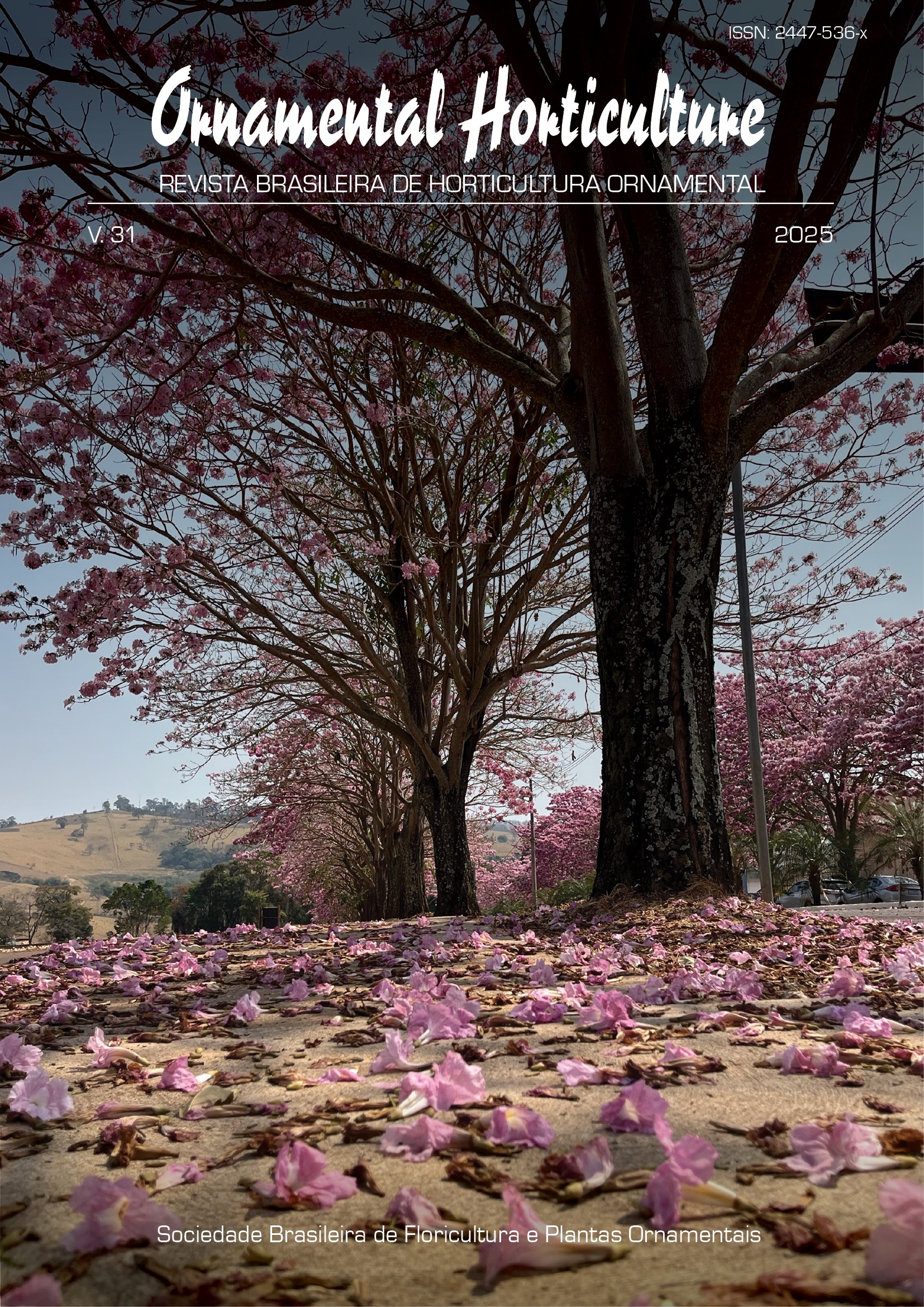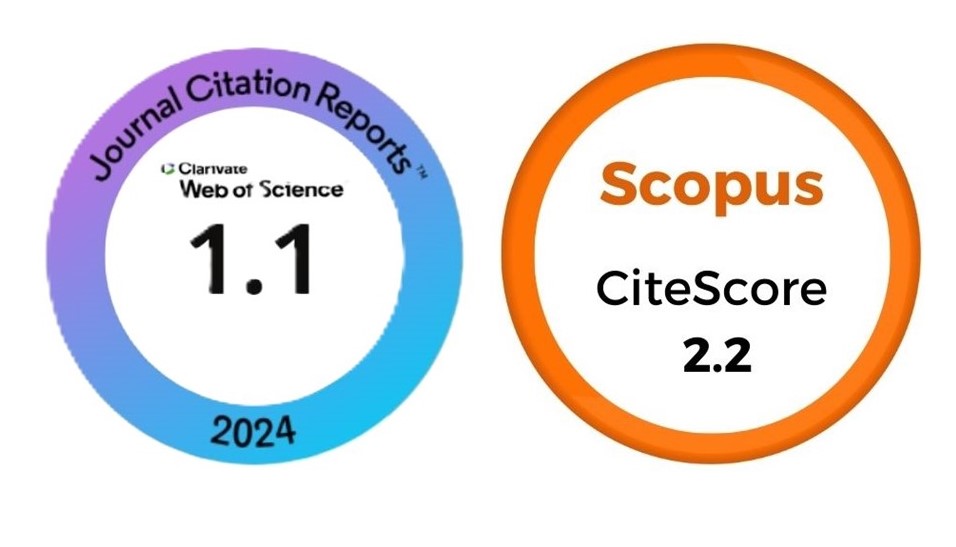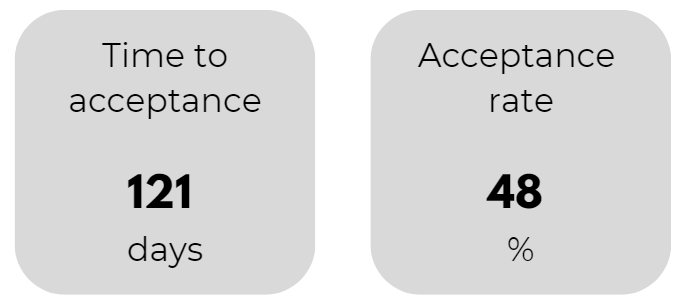Indução in vitro de calos e identificação de variação de DNA em Etlingera elatior usando marcadores de sequências simples repetidas (ISSR)
DOI:
https://doi.org/10.1590/2447-536X.v31.e312799Palavras-chave:
horticultura, polimorfismo, reguladores de crescimento de plantas, variação somaclonal, variações genéticasResumo
Etlingera elatior é uma espécie ornamental promissora para a horticultura, com vários propósitos, tais como medicamentos, agentes antibacterianos, culinários e ornamentais. O aumento da demanda por mais variedades levou a melhorias da E. elatior por meio da tecnologia de cultura de tecidos. A variação somaclonal ajuda a superar a falta de variedades desta espécie, devido à propagação assexual. Os objetivos deste estudo foram induzir calos e brotos e detectar variações genéticas usando marcadores ISSR. Os resultados mostraram que o meio basal Murashige & Skoog (MS) suplementado com glicose e 1,5 mg L-1 de 6-benzilaminopurina (BAP) e 3 mg L-1 de ácido 2,4-diclorofenoxiacético (2,4-D) produziu uma percentagem de calos significativamente maior, 50% após 20 semanas de cultura. Em seguida, os calos friáveis foram transferidos para meios de indução de brotos com diferentes concentrações de BAP, ácido 1-naphthaleneáctico (NAA) e thidiazuron (TDZ). Após 12 semanas em meios de indução de brotos, uma estrutura semelhante a raiz foi observada em massas de calos T11 (0,1 mg L-1 NAA e 0,3 mg L-1 TDZ). As variações genéticas dos calos foram avaliadas com base em sete primers ISSR. Setenta e duas bandas foram geradas, das quais 51 foram polimórficas, com a percentagem média de bandas polimórficas de 72%. O coeficiente de Jaccard de valores de semelhança registrados entre 0,3529 e 0,4762 mostrou o nível de variação genética entre os calos. Em resumo, os explantes foram afetados por várias concentrações de auxina e citocinina para indução de calos. Os marcadors ISSR revelaram a ocorrência de variações genéticas durante os processos de indução de calos e brotos, sugerindo um potencial para gerar novas variantes utilizando cultura de tecidos.
Downloads
Referências
ABD, A.A.; EL-NOUR, M.E.M.; YAGI, S. Callus induction, direct and indirect organogenesis of ginger (Zingiber officinale Rosc). African Journal of Biotechnology, v.15, n.38, p.2106-2114, 2016. https://doi.org/10.5897/ajb2016.15540
ABD EL-HAMEID, A.R.; ABO EL-KHEIR, Z.A.; ABDEL-HADY, M.S.; HELMY, W.A. Identification of DNA variation in callus derived from Zingiber officinale and anticoagulation activities of ginger rhizome and callus. Bulletin of the National Research Centre, v.44, n.28, 2020. https://doi.org/10.1186/s42269-020-0281-9
ATMAJA, M.B.; ANDILA, P.S.; OKTAVIA, G.A.E.; MERRIANSYAH, H. Indonesian threatened Zingiberaceae: Exploring their potential traditional and modern uses. IOP Conference Series: Earth and Environmental Science, v.1255, n.012036, 2023. https://doi.org/10.1088/1755-1315/1255/1/012036
BANSAL, S.; MANOJ, K.; SHARMA; JOSHI, P.; MALHOTRA, E.V.; LATHA, M.; MALIK, S.K. An efficient direct organogenesis protocol for in vitro clonal propagation of Rubia cordifolia L. Industrial Crops and Products, v.208, p.e117856, 2024. https://doi.org/10.1016/j.indcrop.2023.117856
CUNHA NETO, A.R. da; DE OLIVEIRA PAIVA, P.D.; PONCE, M.M.; CALVELLI, J.V.B.; BARBOSA, S. Meta-analysis of new technologies in post-harvest of tropical flowers. Ornamental Horticulture, v.29, n.2, p.226-239, 2023. https://doi.org/10.1590/2447-536X.v29i2.2643
DUTA-CORNESCU, G.; CONSTANTIN, N.; POJOGA, D.M.; NICUTA, D.; SIMON-GRUITA, A. Somaclonal variation—advantage or disadvantage in micropropagation of the medicinal plants. International Journal of Molecular Sciences, v.24, n.1, p.838, 2023. https://doi.org/10.3390/ijms24010838
EECKHAUT, T.; VAN HOUTVEN, W.; BRUZNICAN, S.; LEUS, L.; VAN HUYLENBROECK, J. Somaclonal variation in Chrysanthemum x morifolium protoplast regenerants. Frontier in Plant Science, v.11, p.607171, 2020. https://doi.org/10.3389/fpls.2020.607171
FERREIRA, M.; DOS, ROCHA, A.; DE, NASCIMENTO, F.; DOS, OLIVEIRA, W.D.; SOARES, J.M.; REBOUÇAS, T.A.; MORAIS LINO, L.S.; HADDAD, F., FERREIRA; C.F., SANTOS-SEREJO, J.A.; FERNÁNDEZ, J.S.; AMORIM, E.P. The role of somaclonal variation in plant genetic improvement: A systematic review. Agronomy, v.13, n.3, p.730, 2023. https://doi.org/10.3390/agronomy13030730
GHORBANPOUR, M.; KHADIVI-KHUB, A. Somaclonal variation in callus samples of Plantago major using Inter-Simple Sequence Repeat marker. Caryologia, v.68, p.19–24, 2015. https://doi.org/10.1080/00087114.2014.998128
GOMES-DIAS, G.D.M.; ALMENDAGNA-RODRIGUES, F.; RODRIGUES-SOARES, J.D.; PASQUAL, M.; PORTUGAL- PINTO DE CARVALHO, A.C. Embryogenic induction of torch ginger (Etlingera elatior) callus. Agrociencia, v.48, n.2, p.173-184, 2014.
GUO, B.; ABBASI, B.H.; ZEB, A.; XU, L.; WEI, Y. Thidiazuron: A multi-dimensional plant growth regulator. African Journal of Biotechnology, v.10, n.45, p.8984–9000, 2011. https://doi.org/10.5897/ajb11.636
HOSSAIN, M.J.; ABDUL BARI, MD.; ANZUMAN, N.; AL-AMIN, M.; RAHMAN, M.; HAQUE, K.M.F. Impact of carbon sources on callus induction and regeneration ability in banana cv. Sabri. International Journal of Biosciences, v.3, n.1, p.156-163, 2013.
HU, J.B.; L.I, Q.; LI, J. ISSR analysis of somaclonal variation in callus-derived plants of Amorphophallus Rivieri Durieu. Acta Biologica Cracoviensia Series Botanica, v.53, p.120-124, 2011. https://doi.org/10.2478/v10182-011-0017-0
HUDEČEK. M.; NOŽKOVÁ, V.; PLÍHALOVÁ, L.; PLÍHAL O. Plant hormone cytokinin at the crossroads of stress priming and control of photosynthesis. Frontier of Plant Science, v.13, n.1103088, 2023. https://doi.org/10.3389/fpls.2022.1103088
ISMAIL, N.A; YUSOP, M.R.; MOHAMED. M.T.M.; MUSA, M.H.; GOUS, M.I.A.H. Genetic diversity of torch ginger (Etlingera elatior) germplasm revealed by ISSR and SSR markers. BioMed Research International, v.2019, n.904804. https://doi.org/10.1155/2019/5904804
KOU, Y.; MA, G.; DA SILVA, J.A.T.; LIU, N. Callus induction and shoot organogenesis from anther cultures of Curcuma attenuata Wall. Plant Cell Tissue and Organ Culture, v.112, n.1, p.1–7, 2012. https://doi.org/10.1007/s11240-012-0205-y
MACHANDA, P.; SHARMA, D.; KAUR, G.; KAUR, H.; VANSHIKA. Exploring the significance of somaclonal variations in horticultural crops. Molecular Biotechnology, .1-19, 2024. https://doi.org/10.1007/s12033-024-01214-6
MARIR, E.M.A. Effect of carbon sources and tyrosine on the accumulation of bioactive compound (pyrethrins) in Chrysanthemum hortorum. Sabrao Journal of Breeding and Genetics, v.56, p.846-857, 2024. https://doi.org/10.54910/sabrao2024.56.2.35
MURASHIGE, T.; SKOOG, F. A revised medium for rapid growth and bio assays with tobacco tissue cultures. Physiologia Plantarum, v.15, n.3, p.473-497, 1962. https://doi.org/10.1111/j.1399-3054.1962.tb08052.x
NABIEVA, A.V.; FERSHALOVA, T.D. A novel approach for Begonias micropropagation by inflorescence explants. Ornamental Horticulture, v.29, n.4, p.462-470, 2023. https://doi.org/10.1590/2447-536X.v29i4.2595
OLIVIERO, M.; LANGELLOTTI, A. L.; RUSSO, G. L.; BASELICE, M.; DONADIO, A.; RITIENI, A.; GRAZIANI, G.; MASI, P. Use of different organic carbon sources in Cynara cardunculus cells: effects on biomass productivity and secondary metabolites. Plants, v.11, n.5, p.701, 2022. https://doi.org/10.3390/plants11050701
ORŁOWSKA, R.; ZIMNY, J.; ZEBROWSKI, J.; ANDROSIUK. P.; BEDNAREK, P.T. An insight into tissue culture-induced variation origin shared between anther culture-derived triticale regenerants. BMC Plant Biology, v.24, n.43, 2024. https://doi.org/10.1186/s12870-023-04679-w
PARIDA, R.; NAYAK, S. Rapid in vitro leaf biomass production of genetically stable Curcuma aromatica- an under exploited medicinal plant. Journal of Biologically Active Products from Nature, v.11, n.5–6, p.497–504, 2021. https://doi.org/10.1080/22311866.2021.1970022
PAKUM, W.; INMANO, O.; KONGBANGKERD, A. TDZ and 2,4-D on in vitro propagation of panda plant from leaf explants. Ornamental Horticulture, v.27, n.1, p.41-48, 2021. https://doi.org/10.1590/2447-536x.v27i1.2251
PATEL, R.; MENON, J.; KUMAR, S.; NÓBREGA, M.B.M.; PATEL, D.A.; SAKURE, A.A.; VAJA, M.B. Modern day breeding approaches for improvement of castor. Heliyon, v.10, n.5, e27048, 2024. https://doi.org/10.1016/j.heliyon.2024.e27048
TAHA, H. S. New aspects for callus production, regeneration and molecular characterization of ginger (Zingiber officinale Rosc.). Medicinal and Aromatic Plants, v.2, n.6, p.2-6. 2013. https://doi.org/10.4172/2167-0412.1000141
TAN, S.M.; PIPPEN, R.; YUSOF, R.; IBRAHIM, H.F.; RAHMAN, N.M.; KHALID, N. Simple one-medium formulation regeneration of fingerroot (Boesenbergia rotunda (L.) mansf. Kulturpfl.) via somatic embryogenesis. In Vitro Cellular & Developmental Biology – Plant, v.41, n.6, p.757-761, 2005. https://doi.org/10.1079/ivp2005695
TAPIA, P.M.; HEPP, J.; NASSAR, D.A.V.; TAKASAK, A.K.V. Micropropagation of Nolana intonsa as a tool for its domestication and conservation. Ornamental Horticulture, v.30, e242678, 2024. https://doi.org/10.1590/2447-536X.v30.e24267
WU, B.; ZHANG, N.S.; DIXON, B.; SIERRA, I.; KAN, S.; LAYTON, A.; GU, M.; POOLER, M.; DUAN, H., QIN, H. Reliable callus-induced plantlet regeneration from leaf explants of Lagerstroemia speciosa and genetic fidelity assessment through ISSR markers. Plant Cell, Tissue and Organ Culture, v.157, n.76, 2024. https://doi.org/10.1007/s11240-024-02801-w
YOOSUMRAN, V.; SAETIEW, K.; RUAMRUNGSRI, S.; AKARAPISARN, A.; TEERARAK, M. Micropropagation of young inflorescence Curcuma hybrid in vitro. International Journal of Agricultural Technology, v.18, n.3, p.1355-1366, 2022.
YUNUS, M.F.; ABD AZIZ, M.; ABDUL KADIR, M.; DAUD, S.K.; ABDUL RASHID, A. In vitro mutagenesis of Etlingera elatior (Jack) and early detection of variation using RAPD markers. Turkish Journal of Biology, v.37, p.716-725, 2013. https://doi.org/10.3906/biy-1303-19
YUNUS, M.F.; ISMAIL, N.A.; MEENAKSHI SUNDRAM, T.C.; ZAINUDDIN, Z.; MOHD ROSLI, N. Commercial potentials and agronomic status of Etlingera elatior, a Promising horticulture plant from Zingiberaceae Family. AGRIVITA, Journal of Agricultural Science, v.43, n.3, p.665-678, 2021. http://doi.org/10.17503/agrivita.v43i3.2957
YUNUS, M.F.; MEENAKSHI SUNDRAM, T.C.; ZAINUDDIN. Z.; ISMAIL, N.A.; MOHD ROSLI, N.; MOHAMAD HAMDAN, M.S. Current status and biotechnological development of Etlingera elatior, a promising horticultural and medicinal plant. The Journal of Horticultural Science and Biotechnology, v.97, n.4, p.429-436, 2022. https://doi.org/10.1080/14620316.2021.2021812
Downloads
Publicado
Edição
Seção
Licença
Copyright (c) 2025 Ornamental Horticulture

Este trabalho está licenciado sob uma licença Creative Commons Attribution 4.0 International License.








